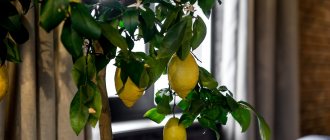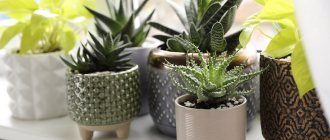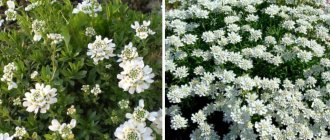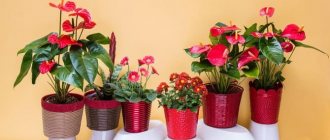Sun-loving perennials for the garden are responsible for the positive mood of dacha owners and delight neighbors and passers-by with their blooms. When creating sunny flower beds, it is required that the inhabitants of the flower bed do not lose a portion of sunlight. The correct combination of crops and selection of growth are valued. This way, tall individuals will provide short specimens with a successful background. When creating a flower garden in the sun, what to plant from perennials is not an idle question for gardeners.
Distinctive features of perennial crops include:
- decorativeness;
- duration of the growth period;
- there is no need to sow and replant for several years.
On a note. During this time, green plantings retain their decorative properties. Most perennial plants are easy to care for and bloom earlier than annuals.
Sun-loving perennials
Scope of application of perennial flowers:
- hanging flowerpots;
- volumetric garden figures;
- floral sculptures for site decoration;
- multi-storey landscape objects.
On a note! The greenery of planting sun-loving flowers for the perennial garden, blooming all summer, when decorating the front garden will serve as a plan for other crops or as a decorative application. They complement each other perfectly due to differences in color, shape and size.
Choosing perennials
Summer residents note the benefits of growing perennials:
- Preserving the beauty of the flowerbed for a long time.
- The grade of a flower bed affects the time frame of its existence. In addition, there is no need to replant and sow rockeries or mixborders.
- The winter hardiness of perennials guarantees that plants can overwinter in the garden without special protection. In addition, crops bloom much earlier due to the development and strength of the roots.
- Minimum expenses for the annual flowering of the flower bed.
Briefly about the main thing
Drought-resistant perennials are in demand in open areas with minimal shading. Such crops do not require watering for a long time, or do without it at all.
Plants for sunny places are characterized by special characteristics. Some may have small or heavily dissected leaves; in others, the leaves are fleshy or covered with a pubescent edge, and have a bluish or silver color.
Crops that prefer sun include a variety of ground cover species, flowers and ornamental (mostly cereal) grasses. They are used to decorate flower beds, borders, alpine slides, and tree trunks.
Flowers for a sunny garden
Long-flowering perennials for the garden
Summer residents are interested in which flowers are best to plant in sunny flower beds in the fall. Perennials grow well when sown before winter:
- Viola. Almost every gardener is familiar with another name for the plant - pansy. Low-growing crops are characterized by a rich range of colors: blue and white, yellow and black, spotted red. The culture loves fertile soil - loam, without stagnant moisture, and is responsive to frequent fertilizing with saltpeter and superphosphate. Fresh manure is prohibited. To prolong flowering, get rid of the seed pods.
Viola
- Astilbe. A herbaceous perennial from the Kamnelovaceae family, it varies in size: from dwarf to tall. The culture is crowned with paniculate inflorescences of different colors. The plant likes growing in rich humus soil, regular watering, and eliminating flower stalks at the end of flowering. To protect from frost, bare roots are covered with spruce branches or agrofibre.
- Hyacinths. When caring for flowers, it is important to apply fertilizers in a timely manner, especially dry ones, immediately when the first shoots form. At the same time, the soil is loosened. At the budding stage of hyacinths, a second root feeding is carried out with liquid fertilizer. If the plants have flowered, it is time to carry out the third feeding. You will need to moisten the soil while the bulbs take root. During drought, shoots are watered abundantly.
- Delphinium. Seeds are planted in autumn or spring. Practice seeding density for a luxurious flower garden. The bed is sprinkled with a 4 mm layer of soil. Types of delphinium: holostem and Persian, hybrid and large-flowered. The crop needs systematic watering, which is combined with careful loosening of the soil.
On a note. Proper root irrigation of delphinium will protect against the development of powdery mildew.
- Nivyanyk. Other names for white chamomile, popovnik, roman herb, white flower. White chamomile will decorate a plot outside the city. The unpretentious culture is frost-resistant. Popovnik grows in one place for up to 7 years, if you properly care for the plant.
- Peony. The light-loving crop likes loose soil. The plant can grow in the garden for more than 25 years. When planting, take into account that the peony does not tolerate drafts and grows strongly. A close distance from the wall of the house is not the best place for planting: excessive rainfall will provoke rotting of the root system.
- Rudbeckia. Looks like chamomile. The petals have different colors: yellow and lemon, orange and brownish. The culture is not demanding on soil. Rudbeckia feels good on moist, well-groomed soil. Responds to fertilizing with nitrophoska and potassium sulfate.
- Chrysanthemum. Plant growth varies from 35 cm to 1.5 m. The bushes have a variety of colors and shades.
- Kniphofia. The African guest has successfully taken root in Russian summer cottages. The height of the exotic is 120 cm. The spike-shaped inflorescence of the plant looks like a huge two-colored cone. The flower is friends with sedum, echinacea, and yarrow. Perfectly shades short sun lovers.
- Turkish poppy. The crop grows without replanting for several years on any type of soil. Poppy petals are painted in scarlet and pink tones. There are also varieties with orange and snow-white shades. The poppy blooms in the last ten days of May and the first days of June.
Turkish poppy
Sun-loving perennials
The ability of drought-resistant plants to grow on southern slopes is one of the advantages of perennials. They are able to withstand not only drought, but also summer heat.
Drought-tolerant groundcover perennials
Without ground cover plants, you won't be able to tidy up your garden. They come in handy when it is necessary to cover a “hopeless” place where other flowers do not grow.
Rejuvenated
Sempervivum unites about 30 plant species. The flower of a typical juvenile has the form of a compact hemispherical rosette of fleshy leaves.
Due to its unusual appearance, the flower is often called a stone rose.
Young is a plant of extraordinary beauty. It is in great demand because it can protect a home from lightning strikes.
For planting, you need to use only a mixture of soil for cacti with the addition of expanded clay and wood shavings. Caring for a drought-resistant flower is easy. The ground cover perennial is unpretentious and grows on sandy and rocky soils. The stone rose does not need watering or feeding, except in very hot summers.
Tenacious
The evergreen perennial reaches a height of up to 50 cm. The drought-resistant flower can tolerate lack of humidity for a month, but seedlings and seeds need to be watered regularly in the first week.
The survivor looks good among the stones
The main problem with cultivation is the rapid acquisition of territory. The tenacious plant does not allow weeds to grow and quickly fills the area. Often it needs to be dug up like a weed.
Bryozoan
The herbaceous perennial has a thin and soft rhizome. It retains moisture well and protects itself from drought, so there is no need for frequent watering. If there is stagnation of moisture, bald spots will form on the green carpet.
Attention! You can water the species only in the evening.
The bryozoan loves sunny or partially shaded areas
. The perennial easily tolerates winter, but to prevent freezing it is covered with spruce branches. It is recommended to replant in spring into sandy or loamy compost.
Read more Yellow perennial flowers: photos and names
Phlox subulate
The drought-resistant perennial prefers dry sandy slopes; the natural species is practically never found in gardens.
Blooms profusely from mid-May
The perennial needs to be fed during the period of active growth. For this purpose, mineral fertilizers containing nitrogen and potassium are used.
Phlox subulate is drought-resistant and does not need to be watered daily. Excess moisture will lead to rotting of the root system and death of the flower. The awl-shaped phlox is a winter-hardy plant, but it often suffers not from frost, but from warm winters.
Sedums
Drought-resistant perennial, light-loving, undemanding to soil. Sedums reach a height of up to 30 cm. Creeping shoots take root easily, thereby creating a thick carpet.
Yellow sedum looks harmonious on an alpine hill
The perennial loves frequent weeding. There is a variety that gets rid of weeds on its own. It is necessary to water the flower only during a prolonged drought, otherwise no more than 2 times a month.
When transplanting, you need to take into account its peculiarity of growing in natural conditions and get as close to them as possible.
Chistets woolly
The herbaceous perennial reaches an average height of up to 20 cm. The inflorescence of the spike is densely planted with numerous small flowers, pink or lilac in color.
The plant is frost-resistant. The groundcover is drought-resistant, prefers loose, light and well-drained soil.
It does not require constant feeding with fertilizers, only once every 3 months you need to add rotted compost. If you do not water during a severe drought, the woolly chickweed will begin to shed its leaves.
An ornamental plant needs to be pruned regularly to maintain its decorative appearance.
Drought-resistant perennial flowers
Most flowers like adequate watering and fertilizer. Not many people can withstand drought. If it is not possible to devote enough time to the front garden, choose plants that are resistant to drought. There is a fairly large selection of drought-resistant perennials.
alpine aster
It grows into lush bushes. Alpine aster can grow in one place for up to 5 years, so it is recommended to select a site for planting in advance.
Before planting, the perennial must be hardened off and sometimes taken outside for a short time. Alpine aster does not like excess water. On very hot days they are watered daily, otherwise watering is rarely required.
After 5 years, the plant is transplanted to a new location. It is not recommended to leave it in one area for longer, because the bush thickens and will bloom worse.
Read more Perennial flowers with lilac and purple flowers
Alpine asters remain decorative all summer long
Phlox paniculata
In nature, there are cylindrical, round, conical, hemispherical, pyramidal and umbrella-shaped perennials. The flower is planted in open and slightly shaded areas.
Important! The soil should be prepared in advance, in the fall - when planting in the summer, in the spring - when planting in the fall.
Paniculate phlox loves moisture. Its deficiency can significantly affect flowering. Growing a perennial is quite a feasible task for a novice gardener. Phlox paniculata is unpretentious in care and can grow in the shade and in the sun. The perennial adapts to any conditions.
Phlox paniculata does not lose its decorative effect for 10 years
Every year it needs feeding with humus and liquid fertilizers. During dry periods, it is better to water in the evening, moderately but regularly.
Irises
The drought-resistant perennial is grown in sunny places, protected from strong winds. Irises reproduce by rhizomes. The buds are collected in inflorescences of 1-7 pieces, located on a strong and juicy peduncle.
Irises do not require frequent watering, even if they have lain in a dry place for a week before planting. Flowering perennials are watered in the evening, making sure that water does not get on the flowers.
Irises need to be sprayed against pests once every 2 weeks.
Daylilies
Unpretentious perennial. Bright and lush flowers will become a real decoration of any flower bed or garden. Daylily endures harsh Russian winters and scorching sun. Propagated by seeds and vegetatively.
The perennial is drought-resistant, does not like sprinkling watering and needs moderate fertilizing with nitrogen.
Water as needed, weed and remove dried leaves. Perennial needs mulching. It prevents sudden temperature fluctuations in the summer and protects the roots from frost.
Bells
The perennial is easy to care for. Bluebells are watered only during severe drought. After watering, it is necessary to remove weeds; tall varieties must be tied to a support.
Bells grow well on any soil; heavy soil is recommended to be diluted with sand and humus.
Attention! If there is no rain for a long time, the flower dies.
On particularly hot days, the bells need to be shaded
Peonies
Peony is a perennial that you can't help but fall in love with. There are flowers with different flowering times; by choosing them correctly, you can watch the beauty of flowering all summer long.
It is recommended to feed peonies after 2 years. At first, they only need the nutritional components that are added during planting.
The perennial can grow up to 60 years, but every 10 years it needs to be transplanted to another place
Drought-resistant ornamental plants
Ornamental grasses are selected for very dry areas and infertile soils. You can create small flower beds from them. Among these there are many inhabitants of the steppe, some are used for medicinal purposes.
Thyme
A plant that is unpretentious in care. A drought-resistant perennial will not cause unnecessary trouble, but some rules should be followed. After sowing the seeds, the soil must be kept moist until germination; the seedlings should not dry out. Young seedlings are planted in loosened and fertilized soil. Thyme quickly adapts to a new place.
Read more Creeping perennial flowers with photos and names
Drought-resistant perennial, light-loving and unpretentious, loves good lighting, but the soil should not be acidic
Feather grass
Measures for caring for feather grass are associated with the removal of harmful weeds, regular and moderate watering. An adult plant needs water only in dry and hot weather. Feather grass is a drought-resistant perennial, but if it is not watered in a timely manner, it will turn yellow and lose its decorative effect.
This is a steppe variety, so it does not need frequent watering. The perennial makes it difficult for many crops to grow; it is important to choose a place in the garden where the decorative feather grass can remain for up to 15 years.
The thin root does not tolerate transplantation well
Two-source
Triple canary grass is a plant of amazing beauty. The dwarf plant is planted in partial shade, but its variegated foliage looks more advantageous when planted in the sun. It is enough to water the perennial once every 5 days, but abundantly. In extreme heat, watering is carried out as the soil dries.
Drought-resistant perennial does not like stagnant water
Elimus
Easily takes root in dry areas. The underground system is very developed.
Decorative Elmus rarely needs watering and is resistant even to severe drought.
Gray fescue
The dense and large plant reaches a height of up to 80 cm. Gray fescue is an ornamental grass that grows in dry and hot places. Sun-loving, not afraid even of intensely lit southern sides.
The decorative crop grows in any soil. Moreover, the worse the soil, the better the fescue feels. You can water once a month or even less often. Gray fescue does not need to be fertilized or fed.
To maintain attractiveness, bushes are pruned
Drought and heat tolerant perennials
Important! Living in the city and infrequent visits to the dacha only on weekends or holidays are fraught with moisture deficiency, which perennials will feel in the dry and hot summer season.
Unpretentious and long-blooming perennial flowers for the garden
Drought-resistant flowers for a flower bed in a sunny area will solve the problem. There are many drought-resistant plants for the garden, including perennials. These are drought-resistant plants, bushes and trees that grow in the sun with insufficient watering.
Groundcovers are drought-resistant perennial flowers that bloom all summer and decorate sunny beds.
Interesting! Ground cover plants are indispensable if you need to camouflage a hopeless area where nothing wants to grow under the scorching rays of the sun and when there is a lack of watering.
Among the heat-resistant flowers for the flower bed are:
- Sedum. Includes representatives of succulent perennial plants that are attractive in appearance and require almost no watering. Succulents obtain water from the air and accumulate it in the thickness of the foliage. Plant growth occurs rapidly, problem areas disappear quickly.
Popular varieties of ground cover plants include:
- false and caustic;
- white and bent;
- Kamchatka and Lydian sedum.
- Irish moss. A dwarf perennial that will ideally fill gaps between tiles or stones, paths in a sunny area. You will need to water the plantings immediately after planting. Tolerates any weather conditions: heat and frost, light and rain. The peak of bryozoan decorativeness falls in July, when the crop blooms with miniature delicate flowers. The plant is resistant to trampling.
- Chistets woolly. The culture is popularly called hare or sheep ears. The drought-tolerant perennial has oblong leaves that appear covered in silver-gray fur. When flowering, the chistets appear blue, pinkish or lilac flowers, which are collected in an inflorescence in the shape of a spike.
Important! To give the perennial a decorative appearance and avoid a sloppy appearance, the chickweed is pruned short at the beginning of the growing season.
- Phlox subulate. Creates a huge pillow of small, needle-like leaves. The heat-resistant perennial blooms at the end of spring. Numerous small flowers of various shades cover the bush. Plantings are carried out on sunny rockeries or hills, which are bordered by low borders.
- Monetary loosestrife. The crop likes to be watered, but it does well without watering. When there is no periodic watering, loosestrife with yellowish-colored leaves in the sun becomes more saturated in color. The perennial looks great on slopes, hills, and also as a grassy lawn cover.
Monetary loosestrife
- Gypsophila. Perennial flowers among drought-resistant plants will help maintain a good mood for a long time. Tumbleweed, as it is popularly called, belongs to the Clove family. The growth of the branched stem is 20-50 cm. The flowering period of gypsophila falls at the beginning of June and lasts until the weather gets colder. Snow-white pink flowers that gather in paniculate inflorescences resemble an airy cloud. The crop is propagated by seed, directly into an open garden bed.
- Daylilies. They are unpretentious and drought-resistant. The foliage is pleasingly decorative after flowering. The variety of daylilies is amazing in size and color. Today, Russian breeders are working on developing remontant (blooming again) varieties.
- Yarrow. Nowadays it is easy to buy highly decorative plant varieties with different colors. The culture is unpretentious in care. Reproduction of yarrow by self-sowing leads to clogging of the garden plot and is a problem for summer residents. Prefers the sunny side of the flower garden.
Yarrow
- Spurge. The perennial is able to withstand drought for a long period. Euphorbia is used to decorate a hill or rock garden. A plant suitable for borders, tall varieties serve as a focal crop for a sunny flowerbed.
The following varieties of milkweed are popular among gardeners:
- multi-flowered and fringed;
- almond-shaped and capitate;
- cypress.
- Gatsaniya. A distinctive feature of a flower that pleases in summer is its wide color palette. Therefore, many designers call the plant a chamomile from South Africa.
Important! Gazania has 40 varieties that grow in warm climates. Some species are grown in cold areas, however, as an annual crop.
Due to the ease of care, the crop is cultivated:
- in pots;
- in rock gardens;
- in containers on the loggia;
- as a border.
5 trees and shrubs that are indifferent to heat
Drought-resistant plants are also found among shrubs and ornamental trees. Thanks for this should be said to the breeders who, tirelessly, develop more and more new varieties of plants that are not afraid of heat. All representatives of the flora listed in the list below can easily do without watering for a long time. But their ancestors could not boast of such a property!
- Spirea.There are several types of spirea that you should consider. But in order not to confuse you too much, let’s just say one thing: in fact, the spring and summer varieties of this shrub differ in only one characteristic - the color of the flowers. Spiraea, which blooms in spring, becomes snow-white. And those species that bloom in summer produce pink and red flowers. The maximum height of spirea is two meters. This ornamental shrub does not require special care, apart from timely pruning, which is necessary in order to maintain the external attractiveness of the spirea.
- Norway maple.This is a decorative variety of maple that can be planted in that part of the dacha where you need a shaded area. The maple itself does not like shade and agrees to grow only in a sunny location. And this despite the fact that he has absolutely nothing to do with the type of soil. But when the plant is fully formed, you can install a swing or a garden sofa under it to relax under its shade on hot summer days. The maximum height of the Norway maple does not exceed six meters. You can trim the tree the way you want.
- Syrian hibiscus. There is only one thing that can destroy this plant - cold summer. Now imagine how much this variety of hibiscus loves heat! The height of hibiscus reaches two meters. And about “destroying,” we, of course, got excited: cool weather will not destroy the plant completely, but it will most certainly disrupt the flowering process of the Syrian hibiscus, which, by the way, is very beautiful and spectacular.
- Juniper.When looking for drought-resistant plants, we recommend that you pay special attention to dwarf and medium-sized varieties of juniper. If you have been to juniper groves at least once, then you probably know that this representative of the flora does not need moisture at all and can live for a long time without water.
- Decorative apple tree.This ornamental tree, which grows from two to nine meters in height, not only bears fruit in the autumn. It blooms incredibly beautifully - with bright pink flowers that make the tree look like a big pink cloud.
Finally, it remains to note only the fact that it is necessary to purchase ornamental apple tree seedlings from trusted suppliers. The problem is that this unusual tree is very vulnerable. It is often attacked by pests and diseases. And if you buy an unhealthy or too weak seedling, do not count on the tree taking root. And in order not to throw money away, make such purchases only in trusted places.
Join our Facebook group
Decorating a flower bed in the sun
In order for a flowerbed in the sun to have a unified style, choose what to plant. In addition, the flower garden must comply with the rules:
- Minimalism. Plant a maximum of 3 varieties of plants per 1 m2 of area.
- Long-lived crops are preferable.
- The soloist occupies the central place and dominates the flowerbed.
- Color palette. The tones determine the style, thematic idea and wishes. The softness of the colors enhances the beauty of individual crops. The combination of blue and white shades has the effect of glowing from within, the violet-blue color gives off coldness and nobility, the pink tone gives off romanticism, the red-yellow color is responsible for the audacity and brightness of the images.
Perennial flower bed
- Foliage is valued no less than flowers. Most of the crops are decorative and remain attractive with the arrival of the autumn season.
- Maintaining optical balance, softening contrasts.
- Spontaneous decisions are welcome.
- They prevent perennial crops from going wild and rejuvenate old bushes.
- Viability of perennials in the flower garden. Partners should not suppress each other.
- Candidates for the flower bed are selected according to the growing conditions.
- Follow the requirements for landing a single individual.
- Plan the design of the edge of the flower bed in advance. Low-growing varieties that cover clearings are suitable. Geranium, dwarf spirea, lungwort, and heuchera will help out.
Perennials for the garden, blooming all summer
Schemes of simple flower beds are:
- Permanent compositions with a clearly defined geometric pattern, where crops bloom at the same time and are separated from each other;
- Non-permanent compositions in which crops are grouped and the flowerbed fits into the garden decor. The order of flowering of perennials will increase the decorative life of the flower bed.
On a note! Regardless of the form, there is a main pattern in planting plants in a flower garden. In the center there are flashy and tall specimens, the middle part is the location of medium-sized specimens, and low perennial long-flowering plants or ornamental grass take place on the edge.
Video description
About flowers for a sunny flowerbed in the following video:
Ornamental grasses for dry areas
Ornamental grasses are increasingly becoming the choice of gardeners when deciding what to plant on the sunny side of their plot; after all, flower perennials do not always allow you to landscape a large space. If you want to create a natural atmosphere in your garden and enjoy it all year round, the following herbs for dry areas are suitable:
- Gray fescue. The plants look like compact bushes of gray-blue color. The grass grows up to 30-50 cm, forms an almost ideal spherical shape, which looks decorative even on bare soil.
- Sandy grate. A perennial with almost blue hard leaves grows up to 70-120 cm. Winters well in the middle zone, has a harmonious appearance next to perennials, blooming blue or purple flowers, also next to purple foliage.
Sandy grate in a natural garden Source yandex.net
- Butelua graceful (buffalo grass). A steppe-style garden requires minimal care, and graceful boutelua will perfectly complement any composition. Its peculiarity is the panicles of inflorescences, reminiscent of a brush or propeller.
- Acute-flowered reed grass. Suitable as the main vertical for a garden composition. The grass has strong, erect stems ending in fluffy, light-colored inflorescences.
Acute-flowered reed grass Source flo.discus-club.ru
Caring for a flowerbed on the sunny side
To provide care for a flower bed of perennials in a sunny place, you will need:
- water the plants periodically and promptly;
- loosen the soil and remove weeds;
- prune faded crops and faded flowers;
- apply fertilizing.
Important! Agrotechnical techniques will help preserve decorative properties, promote the splendor and duration of flowering, provide the required nutrition and resistance to harmful insects and phytodiseases. The timing of fertilizers affects the health of perennials. It is recommended to feed the plants comprehensively, at least twice a month, with a break of 2 weeks.
Creative imagination and desire will turn an ordinary flower garden into a masterpiece. To create an extraordinary flower arrangement, 1 m2 of space is enough. Sun-loving crops are planted on the plot of land, which cope with the prolonged heat and make the garden attractive.
0 0 votes
Article rating
Sunny plot: how to take into account its pros and cons
An open, sun-filled space suits many plant species. Warm-loving crops warm up well, which is important for their proper nutrition and growth. The role of the sun as a natural disinfectant is also important: it dries the leaves and prevents moisture from stagnating on the soil surface. All together reduces the likelihood of putrefactive processes and the appearance of fungal diseases.
However, even for plants that love the sun and heat, the conditions of a sunny lawn near the house may be unfavorable. Therefore, before planting plants in the sun, it is necessary to rely on the following options:
- Intense sun dries out the soil and causes leaf burns; In dry and hot summers, even heat-loving crops can suffer.
- An open area can be made more comfortable if you supplement it with an automatic watering system. Thoughtful humidity control will allow you to expand the range of crops grown and create more diverse compositions. However, any system should be used only before sunrise or late in the evening to prevent water droplets on the leaves from causing burns.
Alpine slide on a personal plot Source green-battery.ru
- A fountain is a suitable solution for a sunny place; it will not only humidify the air, but will also become a highlight of the landscape. A small solar-powered fountain is suitable for arranging a constantly illuminated area. You just need to position it so that the wind does not blow splashes onto the plants and does not over-moisten them.
- A decorative pond can also increase humidity. But the pond has a disadvantage: aquatic plants grow intensively in the sun, and if they are not thinned out, the pond will quickly turn into a swamp. Organizing artificial water movement will help combat the growth of underwater flora and flowering on the surface.
- In spring, snow melts early on open plots, and plants may be defenseless against spring frosts. It is necessary to take care of well-ventilated shelters (ventilation is needed to avoid the greenhouse effect, when plants can get wet).
- Many sun-loving perennials do not tolerate the temperature contrast between day and night (in central Russia it can be significant even in May or August). The solution may be to select zoned (suitable for a given region) varieties.
Gray fescue is one of the drought-resistant species Source na-dache.pro
- Particularly delicate varieties can be planted near the house: during the day, the surface of the wall accumulates heat and releases it at night. Large stones have the same ability, so it is good to arrange a rockery under the sun.
- Heat-loving crops, as a rule, do not tolerate drafts well. Protection will be the wall of the house, a hedge or a bush planted in the right place.











